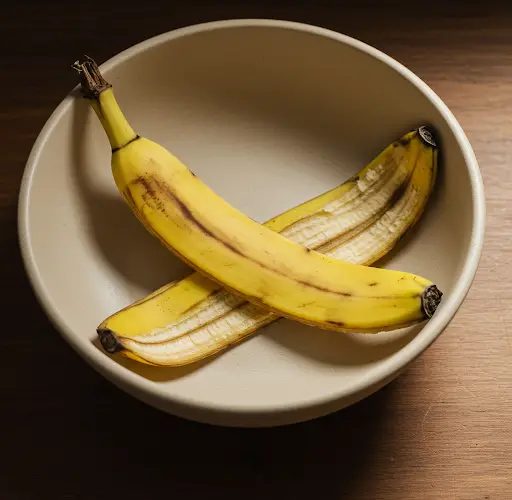In gardening, sometimes the simplest techniques can produce the most surprising results. One such trick—used by experienced gardeners but still a hidden gem to many—involves nothing more than a banana. Yes, an ordinary ripe banana, or more precisely, its peel, can give your pepper plants a powerful head start that leads to a more productive and resilient crop.
While it might sound unusual at first, burying banana pieces in the planting hole before setting pepper seedlings in the ground is a remarkably effective method for naturally enriching the soil and boosting plant health. Let’s explore why this technique works so well, how to do it properly, and what benefits you can expect in your garden.
Why Peppers Need Rich Soil
Pepper plants are considered “heavy feeders” in the gardening world. That means they require a steady and abundant supply of nutrients to grow strong stems, vibrant foliage, and to produce a good yield of fruits. Two of the most important elements for pepper growth are potassium and phosphorus, both of which play a critical role in plant development.
-
Potassium (K) supports flower formation and fruit development. Without enough potassium, pepper plants can grow weak and produce fewer or smaller fruits.
-
Phosphorus (P) is essential for establishing a strong root system and supporting overall plant vitality, especially in the early stages of growth.
Micronutrients like calcium and magnesium also contribute to the health of pepper plants by strengthening cell walls and improving resistance to common plant diseases.
The banana, especially its peel, contains a treasure trove of these nutrients, making it an excellent natural fertilizer when composted or added directly into the soil.
Nutrient Profile of Bananas for Plants
Bananas are naturally rich in:
-
Potassium – Enhances flowering and fruiting
-
Phosphorus – Promotes root development
-
Calcium – Strengthens plant cell walls
-
Magnesium – Supports chlorophyll production and leaf health
Unlike synthetic fertilizers, which deliver nutrients all at once, a buried banana breaks down slowly over time, releasing its nutrients gradually into the soil where the roots of your pepper plant can absorb them as needed.
How to Use Bananas When Planting Peppers
The method is straightforward, inexpensive, and entirely chemical-free. Here’s how to incorporate this technique into your planting process:
Materials Needed:
-
One ripe banana or banana peel (fresh or previously frozen is fine)
-
A sharp knife or scissors
-
Pepper seedlings
-
Garden soil
Instructions:
-
Chop the Banana: Slice the banana or banana peel into small pieces. Smaller chunks decompose faster, which helps deliver nutrients to the plant sooner.
-
Prepare the Planting Hole: Dig a hole for your pepper seedling, just as you normally would for transplanting.
-
Add the Banana Pieces: Place the chopped banana at the bottom of the planting hole. This becomes a nutrient-rich “capsule” directly beneath the plant’s root zone.
-
Cover with Soil: Add about 5 cm (2 inches) of soil over the banana pieces. This step is important to prevent the banana from coming into direct contact with the plant roots, which could cause root burn or attract pests.
-
Plant the Seedling: Place your pepper seedling into the hole and cover the roots with soil. Water thoroughly after planting.
As the banana decomposes, it slowly feeds the plant with essential nutrients—no synthetic fertilizers required.
Why This Method Works
The banana acts as a slow-release organic fertilizer, enriching the soil directly beneath the root zone where it’s most effective. This natural fertilization method also supports microbial life in the soil. As the banana breaks down, it encourages the growth of beneficial microorganisms that help plants absorb nutrients more efficiently.
Since the nutrients are released gradually, the plant receives a consistent and balanced diet over several weeks. This steady feeding promotes:
-
Faster establishment of young pepper plants
-
Improved resistance to pests and diseases
-
Increased fruit production
-
Better flavor and nutritional value in the harvested peppers
Additional Tips for Success
-
This method can be used for other vegetables too, especially tomatoes, eggplants, and cucumbers, which also thrive with potassium-rich feeding.
-
Avoid using unripe bananas, as they contain compounds that take longer to break down.
-
If you’re concerned about pests, bury the banana pieces a little deeper—up to 10 cm below the surface—to reduce odor and insect attraction.
-
Combine this method with compost or other organic matter to further enhance soil fertility.
Conclusion
Gardening doesn’t have to be expensive or complicated. Often, the best results come from working with what nature already provides. By simply adding chopped banana to your planting holes, you’re giving your pepper plants a powerful, nutrient-dense start that can lead to stronger plants and bigger, tastier harvests.
This easy, eco-friendly technique is ideal for anyone who wants to grow healthier vegetables without relying on synthetic fertilizers. Give it a try this season and see the difference for yourself—your peppers will thank you with every bite.



